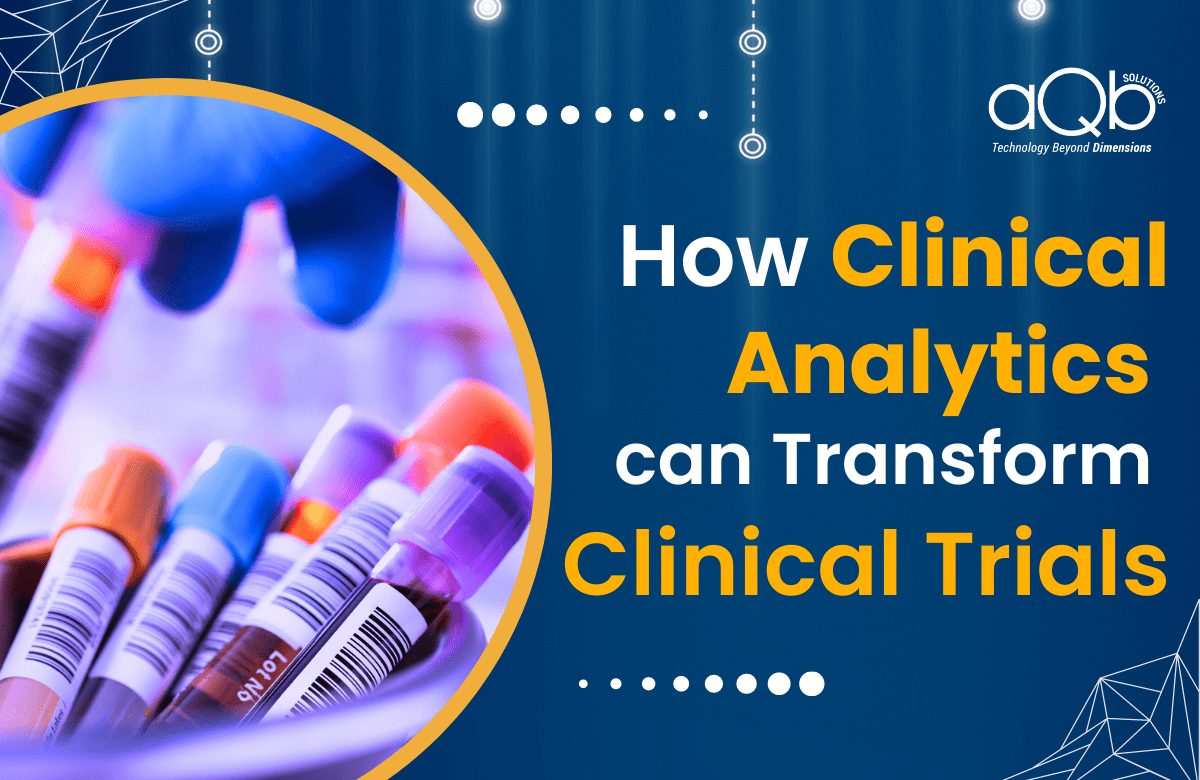Today, what separates the leading businesses from others is how well they leverage their data. Information, nowadays, can be collected from a number of sources and you can increasingly access technologies to extract insights.
Businesses and organizations are today making decisions based on what they know to be true instead of ‘gut feeling’. This data-driven business model is a fundamental element of the wave of digital transformation that would sweep through every industry in 2023 and beyond.
Data and analytics has a dynamic landscape, where things are constantly evolving. We constantly come across new technologies, which offer more accurate and faster access to insights.
As 2023 is round the corner, it’s a great time to look at the prominent trends that would influence how we use data and analytics to propel business growth in 2023.
Chief Data Analytics Trends to Reign in 2023
Artificial Intelligence (AI)
AI is perhaps the technology trend to create the highest impact on how we work, live, and do business in the future. In the field of business analytics, AI will facilitate more accurate predictions, reduce the time spent on repetitive and mundane work, such as data cleansing and data gathering, and empower employees to act on data-driven insights, irrespective of their level of technical expertise and their role.
Simply put, artificial intelligence allows businesses and organizations to analyze data and derive insights much more quickly than if these were done manually. AI does this using software algorithms, which continually improve at their work as they are fed more and more data.
Data Democratization
One of the most prominent data analytics trends for the upcoming year will be the continuous empowerment of whole workforces, instead of only data scientists and data engineers, to put data analytics to work. This has led to new types of augmented working, in which devices, applications, and tools let everyone access intelligent insights so that they can perform their tasks more efficiently and effectively.
In 2023, businesses and organizations will realize that data is fundamental to understand customers, streamline internal operations to lower waste and costs, and build better services and products. However, this can’t happen fully until shop floor, frontline, and non-technical employees, as well as functions like finance and marketing gain the ability of acting on data driven insights.
Data Governance and Regulation
Data governance will be another prominent trend in the upcoming year with more governments introducing laws for regulating the use of personal and other types of data. With laws being introduced like Canadian PIPEDA, Chinese PIPL, and European GDPR, other nations might follow this, creating legislation to safeguard their citizens’ data. As per Gartner analysts, 65% of the population around the world will have to abide by regulations like GDPR, by 2023.
This means that, over the next 12 months, an important task for businesses will be governance, regardless of their location, as they move to ensure that their internal data processing and handling procedures are understood and documented sufficiently.
For several businesses, this would mean auditing the information they have, what to do with it, how to collect it, and where to store it.
While this may sound like extra work, in the long term, the idea is that everyone will benefit as consumers will be more willing to trust organizations with their data if they are sure organizations will look after it well. Those organizations will then be able to use this data to develop products and services that align more closely with what we need at prices we can afford.
Data-as-a-Service
Data as a service, or DaaS for short, is a cloud-based software tool you can use to analyze and manage data, such as data warehouses and business intelligence tools, which you can run from anywhere and anytime. In essence, it allows subscribers to access, use, and share digital files online via the internet.
Since the COVID-19 pandemic broke out, the DaaS industry in the healthcare sector has seen growth opportunities. As users have increased access to high-speed internet, we can expect that DaaS will have a wider reach as well. DaaS will ultimately lead to a greater level of productivity within the business. The use of DaaS in big data analytics will simplify business review tasks for analysts and make sharing data easier across departments and industries.
Since more and more businesses are turning to the cloud to modernize their infrastructure and workloads, DaaS has become a more common method of integrating, managing, storing, and analyzing data.
Augmented Analytics
In today’s predictive analytics world, augmented analytics is one of the main trends you are going to see. Augmented analytics uses machine learning and natural language processing to automate and process data as well as derive insights from it that a data scientist or specialist would handle otherwise. An augmented analytics solution can help business users and executives better understand their business context, ask relevant questions, and uncover insights more quickly. Additionally, augmented analytics helps analysts and advanced users perform more thorough analysis and data preparation tasks, even if they don’t possess deep analytical expertise.
Real-Time Data
When digging into data in search of insights, it’s better to know what’s going on right now – rather than yesterday, last week, or last month. This is why real-time data is increasingly becoming the most valuable source of information for businesses.
Working with real-time data often requires more sophisticated data and analytics infrastructure, which means more expense, but the benefit is that we are able to act on information as it happens. This could involve analyzing clickstream data from visitors to our website to work out what offers and promotions to put in front of them, or in financial services, it could mean monitoring transactions as they take place around the world to watch out for warning signs of fraud.
Social media sites like Facebook analyze hundreds of gigabytes of data per second for various use cases, including serving up advertising and preventing the spread of fake news. And in South Africa’s Kruger National Park, a joint initiative between the WWF and ZSL analyzes video footage in real-time to alert law enforcement to the presence of poachers.
As more organizations look to data to provide them with a competitive edge, those with the most advanced data strategies will increasingly look towards the most valuable and up-to-date data. This is why real-time data and analytics will be one of the most valuable trend for businesses in 2023.
NLP (Natural Language Processing)
NLP aims to read and interpret human language. It is anticipated that NLP will become increasingly important in monitoring and tracking market intelligence as businesses utilize data and information to formulate future strategies.
NLP techniques such as syntactic and semantic analysis require algorithms that extract the important information from every sentence using grammar rules. As opposed to semantic analysis, which deals with the meaning of the data or text, syntactic analysis focuses on the sentences and grammatical issues associated with the data/text.
Tap into these Trends!
By leveraging these data analytics trends for 2023, SMEs, startups, and large organizations can improve customer experience, optimize existing processes, reduce costs, and reach a broader audience.
Being data-centric is a must for businesses in today’s world. If you feel you aren’t reaping the full advantage of your data, consider talking to a data analytics specialist. aQb Solutions, with its vast experience in data science & analytics, can help you make the right sense of your data and harness it for your business growth. Request a consultation today!



